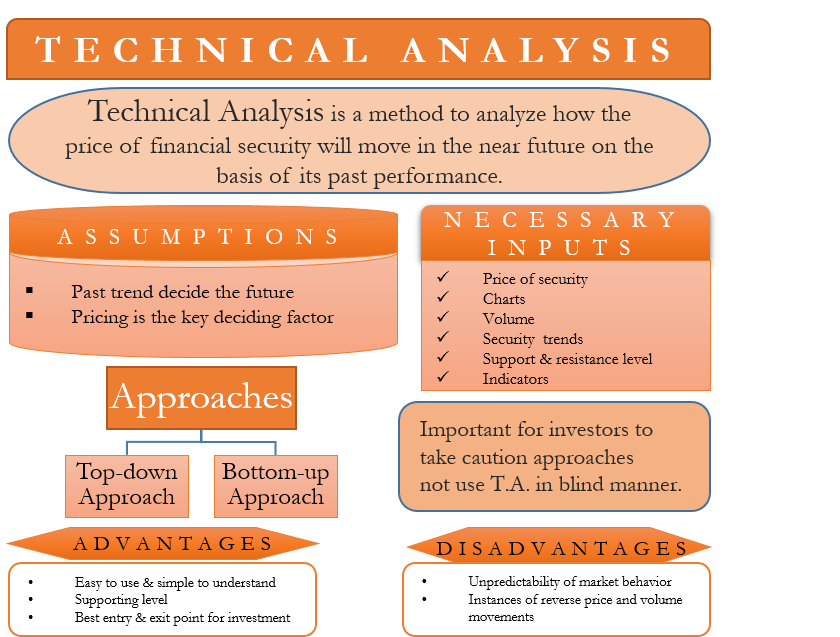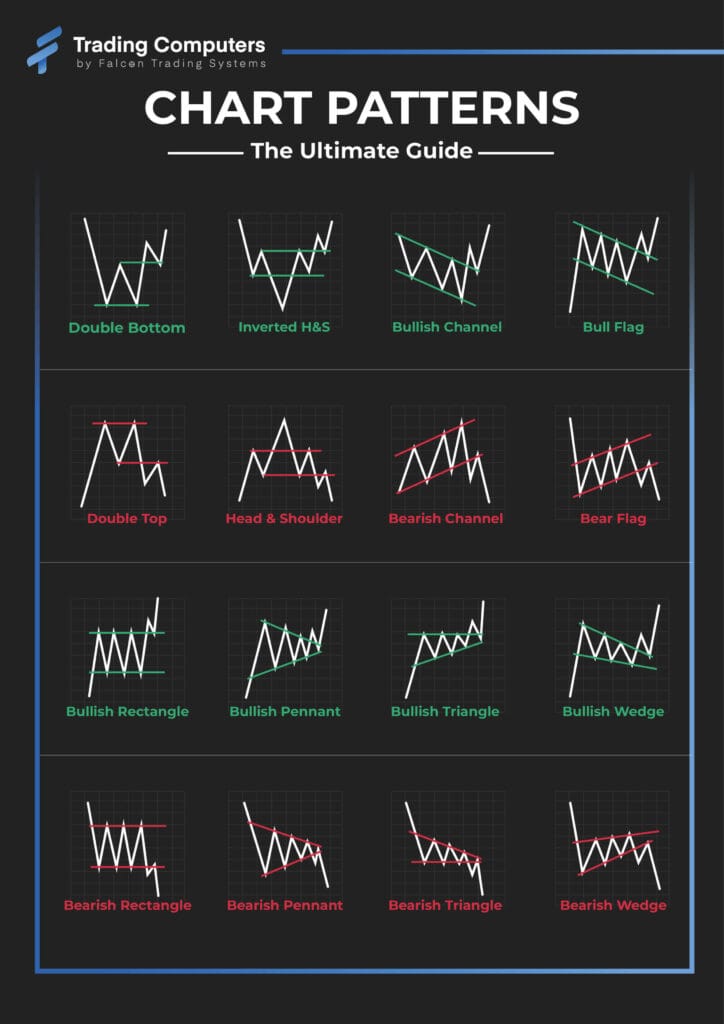Did you know that if you laid out all the charts used in day trading end-to-end, they’d stretch longer than the average investor's attention span? In this article, we explore the essential types of charts crucial for day trading and how to read them effectively, including candlestick, line, and bar charts. Discover key indicators to enhance your analysis, learn how to choose the right time frame, and understand the significance of technical analysis. We’ll also highlight how to identify trends, use volume charts, and set up your trading platform for optimal chart analysis. Finally, we’ll cover common mistakes to avoid and how to manage risk with charts. For deeper insights and expert guidance, DayTradingBusiness is here to help you navigate the complex world of trading charts.
What are the essential types of charts for day trading?
The essential types of charts for day trading are:
1. Line Charts: Simple and show price movement over time. Useful for quick assessments.
2. Bar Charts: Provide more detail with open, high, low, and close prices. Great for understanding price ranges.
3. Candlestick Charts: Popular for their visual appeal and detail, showing price action in a clear format. They help identify trends and reversals.
4. Volume Charts: Display trading volume alongside price movements. Crucial for confirming trends.
5. Tick Charts: Focus on price changes rather than time. Useful for active trading and capturing short-term moves.
6. Renko Charts: Filter out noise by focusing on price changes of a set amount. Good for identifying trends without distractions.
Using these charts effectively can enhance your day trading strategy.
How do I read candlestick charts effectively?
To read candlestick charts effectively, focus on the following key aspects:
1. Understand Candlestick Structure: Each candlestick shows the open, high, low, and close prices. The body indicates the price range between the open and close, while the wicks display the high and low.
2. Identify Patterns: Look for common patterns like dojis, hammers, and engulfing candles. These can signal potential reversals or continuations in price trends.
3. Analyze Trends: Observe the overall trend. Bullish trends feature higher highs and higher lows, while bearish trends have lower highs and lower lows.
4. Use Volume: Combine candlestick analysis with volume to confirm trends. High volume on a bullish candle suggests strong buying interest.
5. Implement Time Frames: Use different time frames to gain insights. Shorter time frames are useful for day trading, while longer ones help identify broader trends.
6. Practice: Regularly practice reading charts to improve your skills. Use historical data to identify patterns and test your analysis.
By focusing on these elements, you can read candlestick charts effectively for day trading.
What role do line charts play in day trading?
Line charts in day trading help visualize price movements over time, making it easier to identify trends and patterns. They provide a clear, simplified view of closing prices, allowing traders to spot potential entry and exit points quickly. By analyzing these trends, traders can make informed decisions about buying or selling assets. Line charts also facilitate quick comparisons between different securities, aiding in strategy development.
How can I interpret bar charts in trading?
To interpret bar charts in trading, focus on the following:
1. Bar Structure: Each bar shows the open, high, low, and close prices for a specific time period. The top of the bar represents the highest price, the bottom indicates the lowest, the left tick shows the opening price, and the right tick shows the closing price.
2. Trends: Look for upward or downward trends. A series of bars with higher highs and higher lows indicates an uptrend, while lower highs and lower lows suggest a downtrend.
3. Volume: Pay attention to the volume at the bottom of the chart. High volume during a price move can confirm the strength of that move.
4. Support and Resistance: Identify horizontal lines where the price has historically bounced back or reversed. These levels can help predict future price movements.
5. Patterns: Look for common patterns like doji, engulfing, or hammer bars, which can signal potential reversals or continuations.
By analyzing these elements, you can make informed trading decisions based on the insights provided by bar charts.
What indicators should I use with day trading charts?
Use indicators like moving averages for trend direction, RSI for overbought or oversold conditions, MACD for momentum shifts, and Bollinger Bands for volatility. Volume is also crucial; it confirms price movements. Combine these to enhance your decision-making in day trading.
How do I choose the right time frame for my charts?
Choose a time frame for your charts based on your trading style. For day trading, use shorter time frames like 1-minute, 5-minute, or 15-minute charts to capture quick price movements. If you're looking for trends, consider 30-minute or hourly charts. Align your time frame with your strategy: scalpers benefit from very short intervals, while swing traders may prefer daily charts. Test different time frames to see which provides the best signals for your trading decisions.
What are the advantages of using technical analysis charts?

Technical analysis charts offer several advantages in day trading. They provide clear visual representations of price movements, helping traders identify trends and patterns quickly. Charts facilitate decision-making by highlighting support and resistance levels, enabling traders to set entry and exit points effectively. They also allow for the application of various indicators and tools, such as moving averages and RSI, which can enhance trading strategies. Additionally, using charts can improve risk management by visually mapping out potential losses and gains. Overall, they streamline the analysis process, making it easier to make informed trading decisions.
How can I identify trends using charts in day trading?
To identify trends using charts in day trading, focus on these key steps:
1. Select the Right Chart: Use candlestick charts for detailed price action analysis.
2. Identify Trend Lines: Draw trend lines connecting higher lows in an uptrend and lower highs in a downtrend.
3. Look for Patterns: Recognize common patterns like flags, triangles, and head-and-shoulders to predict future movements.
4. Use Indicators: Apply moving averages to smooth price data and confirm trends. The 50-day and 200-day moving averages are popular choices.
5. Monitor Volume: Analyze volume spikes alongside price movements; increasing volume can signal trend strength.
6. Time Frames: Check multiple time frames (e.g., 1-minute, 5-minute) to gain a comprehensive view of trends.
By combining these techniques, you can effectively spot and act on trends in day trading.
What tools can help me create and analyze trading charts?
Tools that can help you create and analyze trading charts include:
1. TradingView: Offers customizable charts, technical indicators, and social networking features for sharing insights.
2. MetaTrader 4/5: Popular platforms for forex and stock trading that provide advanced charting tools and automated trading options.
3. Thinkorswim: A robust platform by TD Ameritrade with extensive charting capabilities and real-time data.
4. NinjaTrader: Great for futures and forex traders, featuring advanced charting and analysis tools.
5. StockCharts: Web-based service focusing on technical analysis with a variety of chart types.
6. eSignal: Professional-grade software with powerful charting and analysis features for serious traders.
Using these tools, you can visualize market trends, apply technical analysis, and make informed trading decisions.
How do I set up my trading platform for chart analysis?
To set up your trading platform for chart analysis in day trading, follow these steps:
1. Choose the Right Platform: Select a trading platform that offers advanced charting tools, like TradingView or Thinkorswim.
2. Select Chart Type: Use candlestick charts for detailed price action analysis. They provide insights into market trends and reversals.
3. Customize Timeframes: Set your charts to shorter timeframes, like 1-minute or 5-minute intervals, to capture quick price movements.
4. Add Technical Indicators: Incorporate indicators such as Moving Averages, RSI, or MACD to identify trends and potential entry/exit points.
5. Use Support and Resistance Levels: Mark key support and resistance levels on your charts to determine potential breakout or reversal areas.
6. Set Up Watchlists: Create a watchlist of stocks you want to track, making it easier to analyze multiple charts quickly.
7. Save Chart Layouts: Save your customized chart layouts for quick access during trading sessions.
8. Practice with Simulations: Use demo accounts to practice your chart analysis skills without risking real money.
By following these steps, you'll effectively set up your trading platform for insightful chart analysis in day trading.
What common chart patterns should day traders look for?

Day traders should look for the following common chart patterns:
1. Head and Shoulders: Indicates a reversal trend. Look for three peaks: a higher peak (head) between two lower peaks (shoulders).
2. Double Top and Double Bottom: Double top signals a bearish reversal after an uptrend; double bottom indicates a bullish reversal after a downtrend.
3. Flags and Pennants: These are continuation patterns. Flags are rectangular, while pennants are triangular, both indicating a brief consolidation before the previous trend resumes.
4. Cup and Handle: Suggests a bullish continuation. The cup forms a U shape, followed by a consolidation (the handle) before a breakout.
5. Triangles (Ascending, Descending, Symmetrical): These patterns indicate potential breakouts. Ascending triangles suggest bullish trends, while descending triangles indicate bearish trends.
Focus on these patterns to make informed trading decisions and improve your day trading strategies.
How can I use volume charts to enhance my trading strategy?
To enhance your trading strategy with volume charts, focus on these key points:
1. Identify Trends: Use volume to confirm price trends. Rising prices with increasing volume signal strength, while rising prices with decreasing volume may indicate a reversal.
2. Spot Breakouts: Look for spikes in volume during breakouts. High volume on a breakout suggests momentum, while low volume may indicate a false breakout.
3. Analyze Support and Resistance: Observe volume at key support and resistance levels. High volume near these levels strengthens their significance.
4. Monitor Volume Patterns: Watch for volume patterns like accumulation (increasing volume on price declines) or distribution (increasing volume on price rises) to gauge market sentiment.
5. Combine with Other Indicators: Use volume in conjunction with other technical indicators for a more robust strategy. For instance, pair moving averages with volume to confirm signals.
By integrating volume charts into your analysis, you gain insight into market dynamics, helping you make informed trading decisions.
Learn about How to Use Volume to Enhance Momentum Trades
What is the importance of support and resistance levels in charts?
Support and resistance levels are crucial in day trading because they indicate where prices tend to stop and reverse. Support levels signal potential buying opportunities, while resistance levels highlight selling points. These levels help traders identify entry and exit points, manage risk, and set stop-loss orders. Recognizing these areas can enhance decision-making and improve trade outcomes.
How do I combine multiple charts for better decision-making?
To combine multiple charts for better decision-making in day trading, follow these steps:
1. Select Relevant Charts: Choose charts that display different time frames, such as 1-minute, 5-minute, and hourly, to capture various trading signals.
2. Overlay Indicators: Use technical indicators like moving averages, RSI, or MACD on your charts to identify trends and potential entry or exit points.
3. Use Correlation: Analyze charts of correlated assets to see how they move together. This helps in identifying potential opportunities or risks.
4. Create a Dashboard: Utilize trading platforms that allow you to arrange multiple charts in a single view for easy comparison and faster decision-making.
5. Adjust Visuals: Customize chart settings (colors, styles) to make key information stand out, making it easier to interpret data quickly.
6. Backtest Strategies: Use historical data on multiple charts to test your trading strategies and refine your approach based on past performance.
7. Continuous Monitoring: Keep an eye on news and events that may affect multiple assets, adjusting your charts and strategies accordingly.
Implementing these methods will enhance your decision-making process in day trading.
What mistakes should I avoid when using charts in day trading?
Avoid cluttering your charts with too many indicators; stick to a few that you understand well. Don't ignore the time frame; choose one that aligns with your trading strategy. Avoid relying solely on past performance; market conditions can change rapidly. Don’t forget to incorporate risk management techniques. Avoid emotional decisions; stick to your plan and trust your analysis.
How Can I Effectively Use Charts for Day Trading?

Day trading is the practice of buying and selling financial instruments within the same trading day, aiming to profit from short-term price movements. To use charts in day trading, focus on price patterns, volume indicators, and technical analysis tools like moving averages and trend lines to identify entry and exit points for trades.
Learn more about: What is Day Trading?
Learn about How to Use Charts for Forex Day Trading
How can I use charts to manage risk and set stop-loss orders?
To manage risk and set stop-loss orders using charts in day trading, follow these steps:
1. Identify Support and Resistance Levels: Use historical price data to pinpoint key support and resistance levels. Place stop-loss orders just below support for long positions and above resistance for short positions.
2. Use Trend Lines: Draw trend lines to visualize price direction. Set stop-loss orders near trend line breaks to limit losses if the trend reverses.
3. Apply Technical Indicators: Utilize indicators like moving averages or the Relative Strength Index (RSI) to determine entry and exit points. Set stop-loss orders based on indicator signals.
4. Analyze Chart Patterns: Recognize chart patterns (e.g., head and shoulders, flags) to predict price movements. Position stop-loss orders outside these patterns to safeguard against false breakouts.
5. Monitor Volatility: Use tools like Bollinger Bands to assess market volatility. Adjust stop-loss orders based on changes in volatility to avoid being stopped out prematurely.
By effectively using these charting techniques, you can manage risk and set strategic stop-loss orders in your day trading.
Conclusion about How to Use Charts in Day Trading
Mastering chart usage in day trading is crucial for making informed decisions and optimizing trading strategies. By understanding various chart types, effectively reading candlestick patterns, and utilizing indicators, traders can identify trends and enhance their market analysis. Additionally, recognizing support and resistance levels, leveraging volume charts, and avoiding common mistakes can significantly improve trading outcomes. For more in-depth insights and guidance on utilizing charts effectively, DayTradingBusiness is your go-to resource for elevating your trading game.
Learn about How to Use Charts for Forex Day Trading
Sources:
- Stock market trading rule discovery using technical charting heuristics
- History matters: How short-term price charts hurt investment ...
- Red Sea Attacks Disrupt Global Trade
- The FX Swap Market: Growing in the Shadows | CFA Institute ...
- CHART OF THE WEEK
- Artificial intelligence techniques in financial trading: A systematic ...